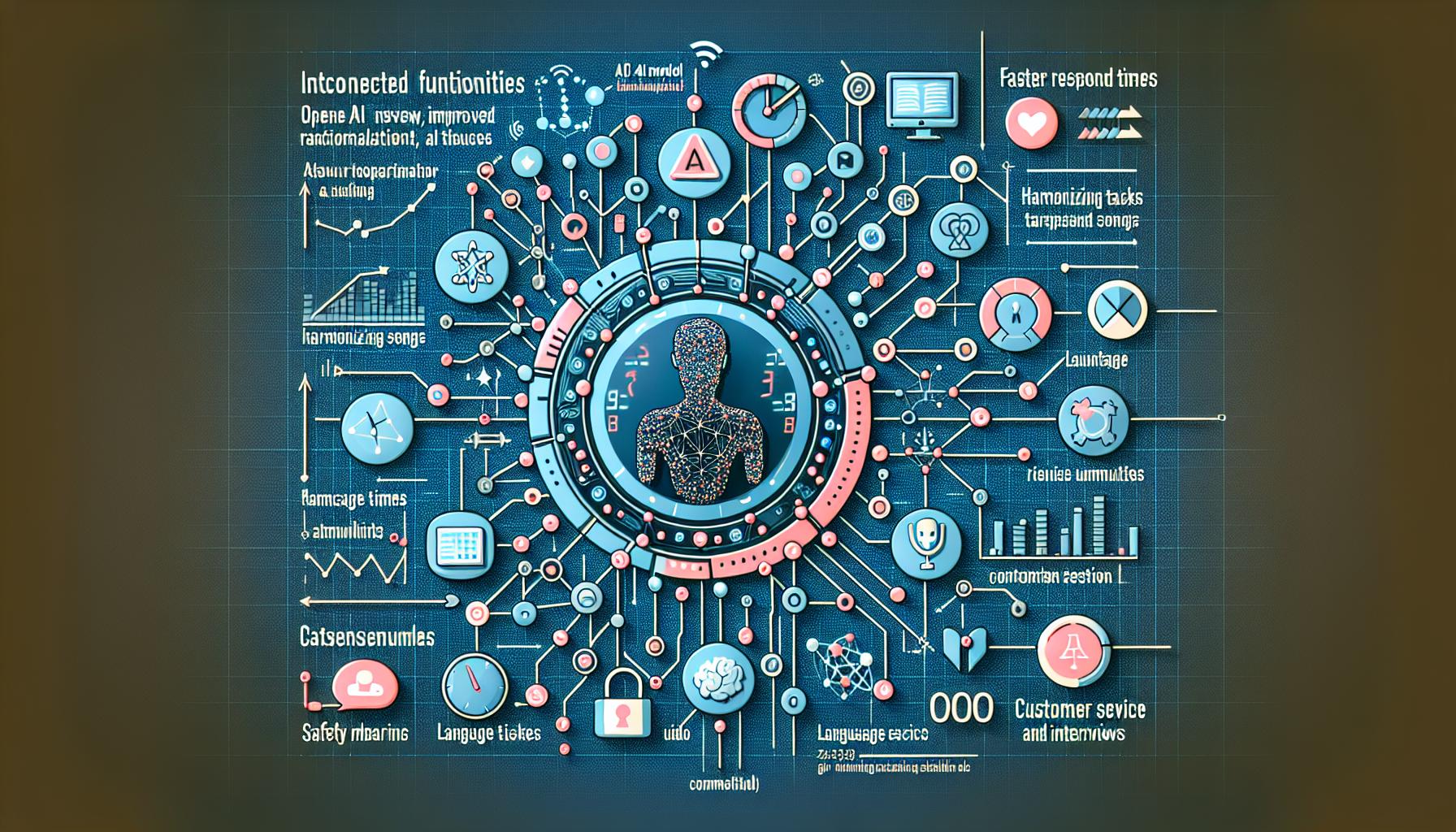GPT-4o: Revolutionizing AI with Integrated Text, Audio, and Vision Inputs

Introduction
OpenAI has recently unveiled its latest masterpiece, GPT-4o, a revolutionary language model designed to integrate text, audio, and visual inputs and outputs. The 'o' in GPT-4o stands for 'omni,' a term that encapsulates the model's ability to handle multiple modalities. This innovative advancement marks a significant leap in natural machine interactions, promising quick and seamless responses across various input forms.
Key Features and Capabilities
Integrated Multi-Modal Functionality
One of the standout features of GPT-4o is its integrated multi-modal functionality. Unlike its predecessors, which required multiple models to process different types of inputs, GPT-4o can handle text, audio, and image inputs through a single neural network system. This unified approach not only preserves the context and nuances that were often lost in previous setups but also ensures a more cohesive and natural interaction with the AI.
Reduced Latency
Another significant improvement in GPT-4o is its reduced latency. With an average response time of 232 milliseconds, the model's speed is now comparable to human conversational speed. Earlier versions, such as GPT-4, required multiple models with higher latencies, which often resulted in the loss of important audio cues like tone and background noise. GPT-4o's streamlined architecture eliminates these issues, providing a more natural and engaging user experience.
Complex Task Handling
GPT-4o excels in various advanced tasks, including harmonizing songs, real-time translations, and generating expressive audio outputs such as laughter and singing. The model is also adept at preparing for interviews and generating customer service responses. Its advanced capabilities open up a plethora of new applications, making it a versatile tool for numerous industries.
Performance Improvements
When it comes to performance, GPT-4o is unparalleled. It matches GPT-4 Turbo's performance in English text and coding while surpassing it in non-English languages. The model also sets new standards in reasoning, as evidenced by high scores on general knowledge question benchmarks. Additionally, it outperforms previous state-of-the-art models in audio and translation benchmarks, demonstrating strong capabilities in multilingual and vision tasks.
Safety and Ethical Measures
Safety and ethics are paramount in the development of GPT-4o. OpenAI has embedded extensive safety mechanisms to filter training data and employ post-training safeguards, ensuring the model does not exceed a 'Medium' risk level in areas like cybersecurity, persuasion, and model autonomy. The use of external red-teaming by over 70 experts from various fields aims to mitigate new risks associated with these enhanced modalities.
Accessibility and Future Plans
Availability
GPT-4o is readily available in ChatGPT, including a free tier and extended features for Plus users. Moreover, a new Voice Mode using GPT-4o is currently in alpha testing for ChatGPT Plus users. This allows for even more interactive and natural conversations with the AI.
API Access
Developers can also access GPT-4o via API, benefiting from its faster performance and lower costs. The model's audio and video capabilities will progressively roll out to a chosen group of trusted partners, with a broader release to follow.
Community Feedback
OpenAI emphasizes the importance of user feedback to further refine GPT-4o. This input is crucial to close performance gaps where GPT-4 Turbo might still be more efficient. By engaging with the community, OpenAI aims to ensure that GPT-4o continues to evolve and meet the needs of its users.
How GPT-4o Retains Context and Nuances Better
GPT-4o's ability to retain context and nuances better than previous setups lies in its single neural network system. The unified approach allows the model to process text, audio, and image inputs in a cohesive manner, preserving the subtleties and complexities of each modality. In contrast, earlier versions required multiple models, each handling a different type of input, which often led to fragmented and disjointed outputs. GPT-4o's integrated system ensures that all inputs are considered in relation to one another, resulting in more accurate and nuanced responses.
Applications Benefiting from Real-Time Translation and Expressive Audio
There are numerous applications that can benefit from GPT-4o's real-time translation and expressive audio capabilities. In the entertainment industry, for instance, GPT-4o can be used to create more immersive and interactive experiences by providing real-time translations and expressive audio outputs like laughter and singing. In customer service, the model can generate more natural and engaging responses, enhancing the overall customer experience. Additionally, GPT-4o's real-time translation capabilities can be leveraged in international business settings, making communication more seamless and efficient.
Future Safety Measures and Improvements
OpenAI is committed to continuously improving the safety and ethical considerations of GPT-4o. In future updates, the company plans to introduce more sophisticated safety mechanisms and post-training safeguards. This includes the implementation of advanced filtering techniques and the involvement of a larger and more diverse group of external experts for red-teaming. By doing so, OpenAI aims to ensure that GPT-4o remains a safe, ethical, and reliable tool for users worldwide.
Conclusion
GPT-4o represents a significant advancement in the field of AI, offering integrated text, audio, and visual inputs and outputs through a single neural network system. With its reduced latency, complex task handling capabilities, and improved performance, GPT-4o is poised to revolutionize natural machine interactions. As OpenAI continues to refine and improve the model, the possibilities for its application are virtually limitless.




